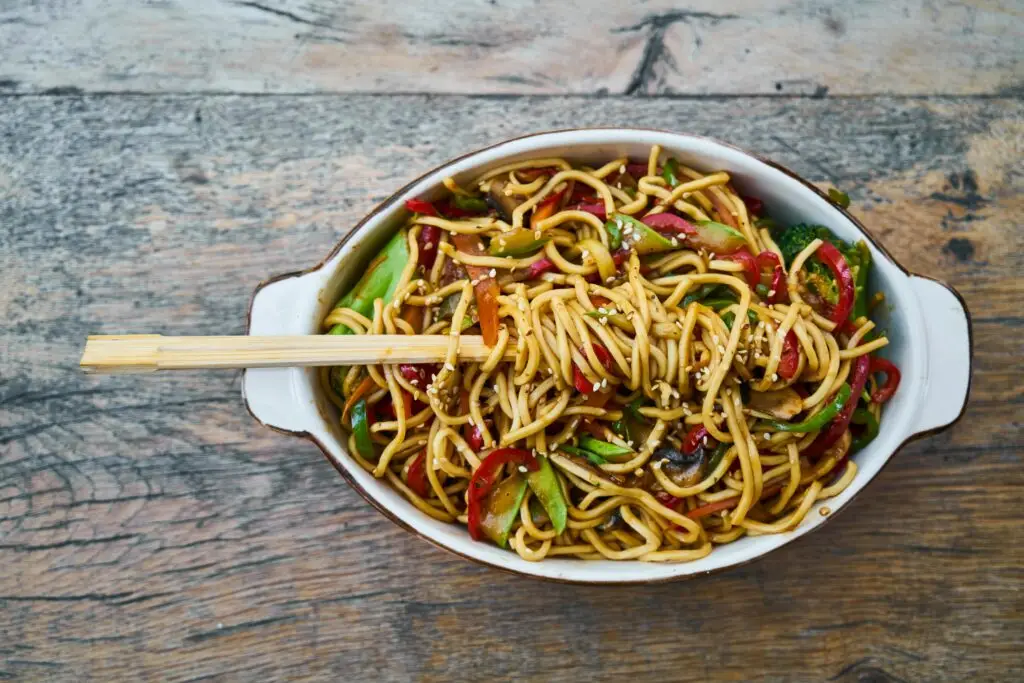Asian food is considered one of the most popular and flavorful cuisines available. It is not only enjoyed in their home countries but is also sought after across nations for its bold taste and delicious flavor profiles. The culinary traditions of China and Japan are two of the most well-known in East Asia, each offering distinct dishes that reflect their cultures. While both cuisines share some similarities, they also have notable differences in flavor profiles, ingredients, and cooking methods. In this article, we’ll explore the culinary differences between Chinese vs Japanese Food, how interest in these dishes has grown in Western culture, and why San-J Tamari Soy Sauce can elevate the flavor of both cuisines.
Popular Chinese and Japanese Foods in Western Culture
Both Chinese and Japanese food have gained global popularity over the years, with dishes from both countries becoming staples in Western food culture. From Chinese takeout to Japanese sushi restaurants, these cuisines have made their mark on dining habits worldwide. While there are some similarities between Chinese and Japanese dishes, there are also significant differences that make each one unique. Let’s dive into the culinary differences between Chinese and Japanese food to understand how they compare and contrast.
Popular Chinese Food
some of the most popular Chinese meals enjoyed globally :
- Fried rice and other rice dishes: A staple in Chinese cooking, often stir-fried with vegetables, eggs, and proteins.
- Dumplings: Both steamed and pan-fried, these are filled with meats or vegetables and are a staple of Chinese cuisine.
- Hotpot: A communal meal with a simmering pot of broth where diners cook their own ingredients like meat, seafood, and vegetables. read more about the history of Chinese hotpot
- Chow mein: Stir-fried noodles with vegetables and your choice of protein.
- Peking duck: A famous dish featuring crispy duck skin and tender meat, typically served with pancakes and hoisin sauce.
- Sweet and sour pork: Crispy pork served in a tangy sauce made with vinegar, sugar, and ketchup.
Popular Japanese Meals
Japanese food has also become widely recognized and beloved around the world. Some popular Japanese dishes include:
- Ramen: Noodles served in a rich broth, typically topped with pork, boiled eggs, and vegetables.
- Tempura: Lightly battered and deep-fried seafood or vegetables.
- Sushi: Raw fish or vegetables, often served with vinegared rice and wrapped in nori (seaweed).
- Takoyaki: A popular street food featuring batter-filled balls with octopus inside, topped with bonito flakes and sauce.
- Teriyaki: Meat or fish glazed with a sweet soy sauce marinade and grilled or broiled.
- Japanese curry: A thick, savory stew usually served with rice and featuring vegetables and meat like chicken or beef.

Similarities Between Chinese and Japanese Cuisine
Though both Chinese and Japanese cuisines hail from East Asia, the similarities between them are fewer than you might expect.
However, there are still some notable commonalities when comparing Chinese vs Japanese food:
1. Fresh ingredients: Both cuisines emphasize the use of fresh, high-quality ingredients. This is essential for maintaining the authentic flavors and textures in dishes. Fish, vegetables, and meats must be as fresh as possible to create the distinctive tastes found in both cuisines.
2. Rice: Rice is the foundation of both Chinese and Japanese meals. While the types of rice differ, it remains a common staple.
3. Soy sauce: Both Chinese and Japanese cultures incorporate soy sauce into their dishes. However, the type of soy sauce differs—Chinese soy sauce is typically darker and stronger in flavor, while Japanese soy sauce is lighter and slightly sweeter.
Culinary Differences Between Chinese and Japanese Food
While both cuisines share some elements, such as rice, soy sauce, and a love for fresh ingredients, their distinct cooking styles, flavor profiles, and ingredients set them apart.
Let’s take a closer look at the culinary differences between Chinese and Japanese food and what makes each cuisine unique.
Flavor Profile and Ingredients:
Chinese Cuisine:
In China, rice and noodles are the main staple foods. Chinese food is rich, full of texture, and layered in flavor. Chinese dishes are known for their bold, complex flavor profiles, often including a balance of salty, sweet, sour, and spicy elements. Spices like garlic, ginger, and scallions are essential in Chinese cooking. Additionally, Chinese food often uses strong sauces and seasonings like soy sauce, hoisin sauce, and vinegar.
Protein options in Chinese cuisine include beef, chicken, pork, and duck, often served with rice or noodles. For those who love bold and spicy meals, Chinese food offers a wide range of heat levels from mildly spicy to intensely fiery dishes like Kung Pao chicken or mapo tofu.
Japanese Cuisine:
On the other hand, Japanese cuisine is known for its subtlety. The flavor profiles are often lighter, with an emphasis on preserving the natural taste of fresh ingredients. Japanese dishes rely on delicate seasonings such as soy sauce, miso, and dashi (a broth made from seaweed and fish). The flavors in Japanese food are designed to highlight the inherent taste of the ingredients rather than overpowering them with spices or heavy sauces.
Protein options in Japanese food include beef, chicken, pork, seafood like salmon and shrimp, as well as more exotic options like lobster and calamari. Japanese food tends to have a more minimalist approach to seasoning and preparation.
Cooking Styles and Techniques
When considering the culinary differences between Chinese and Japanese food, one of the most significant distinctions lies in cooking methods.
Chinese Cuisine:
Chinese food is often associated with stir-frying, deep-frying, and braising techniques. Dishes are often prepared quickly at high heat, retaining a crispy texture. The wok is a common tool in Chinese kitchens, allowing for quick cooking and even heat distribution. Rice and noodles serve as a base for many dishes, making Chinese meals hearty and filling.
Japanese Cuisine:
In contrast, Japanese cooking emphasizes lightness and freshness. Japanese food tends to use less oil than Chinese cuisine, resulting in dishes that are easier to digest and less greasy. Raw food is also prevalent in Japanese cooking, especially in sushi and sashimi. Tempura, which involves lightly battering and deep-frying seafood and vegetables, is another popular Japanese preparation method.
Meal Preparation and Presentation
the culinary differences between Chinese and Japanese food are especially notable:
In terms of meal presentation
Chinese Cuisine: Chinese meals are often served in large family-style portions, where different dishes are shared among the diners. The presentation is typically more about the flavor and aroma rather than the aesthetics, though many Chinese dishes are visually vibrant with the use of colorful vegetables and rich sauces.
Japanese Cuisine: Japanese meals, on the other hand, are usually served in individual portions, with each dish presented separately. The focus in Japanese food is on balance, with careful attention to the seasonality of ingredients. Japanese food often includes a combination of small, beautifully arranged dishes that allow diners to experience a wide range of flavors in a single meal.
Why San-J Tamari Soy Sauce Works Well with Both Cuisines
While Chinese vs Japanese food each have their unique characteristics, one ingredient that ties them together is soy sauce. San-J Tamari Soy Sauce stands out for its versatility. Its rich, deep flavor complements both Chinese and Japanese dishes, whether you’re preparing a sushi roll, stir-frying vegetables in a wok, or glazing meats. The gluten-free, rich umami taste of San-J Tamari Soy Sauce enhances the natural flavors of the food without overpowering them, making it the perfect addition to any meal from either cuisine.
Chinese vs Japanese Food
When considering Chinese vs Japanese food, it becomes clear that these two culinary traditions, while both deeply rooted in East Asia, differ in their flavor profiles, cooking techniques, and meal presentation.
The culinary differences between Chinese and Japanese food highlight the bold, complex flavors and hearty meals of Chinese cuisine versus the subtle, delicate, and fresh flavors of Japanese cuisine. Both offer a unique and delicious culinary experience, and with the right ingredients, like San-J Tamari Soy Sauce
Explore More:
